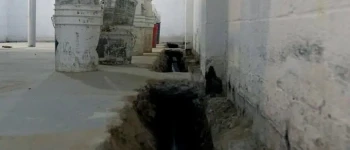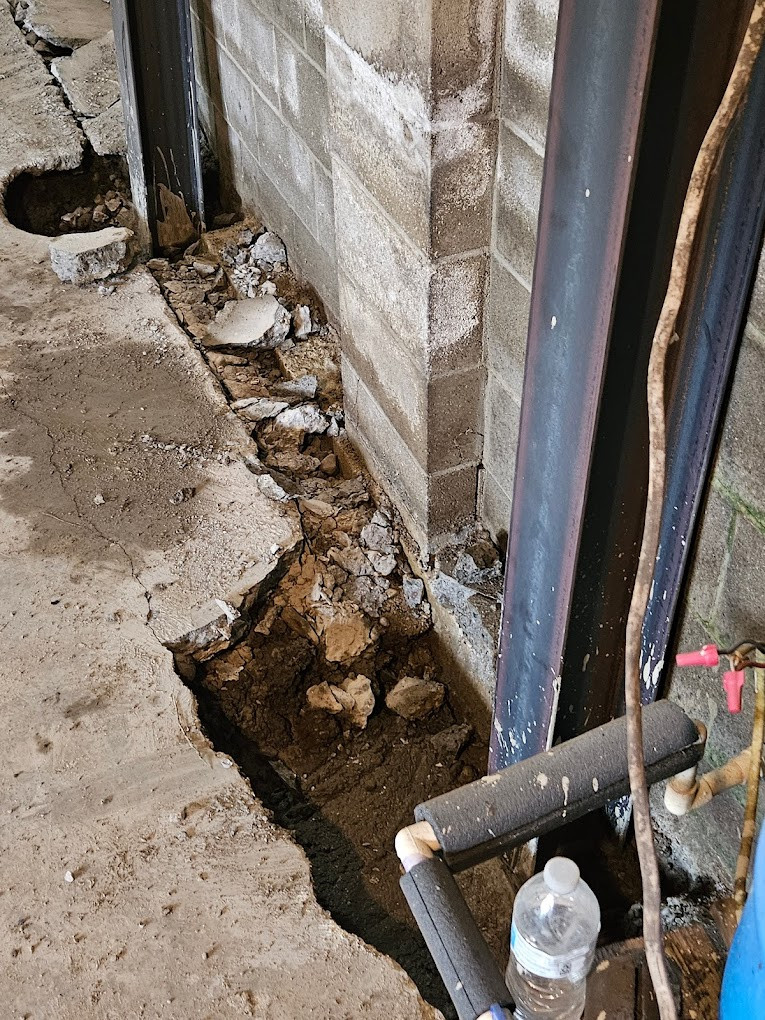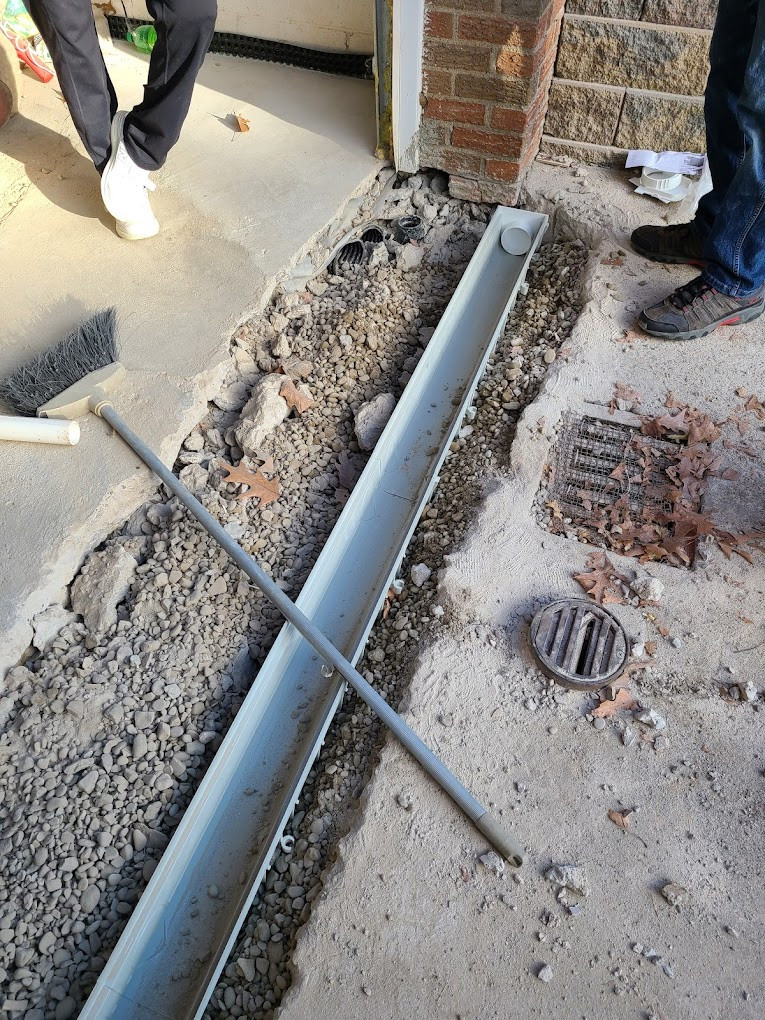You’ve likely heard about the importance of gutters and grading when it comes to waterproofing, but do you know exactly how they work together to protect your property from water damage? With well-installed gutters, you’re directing rainwater away from the structure, while proper grading ensures no water pools near your foundation. But there’s more to it than this simple explanation. Let’s explore the intricacies of these systems, how they enhance your property’s resilience, and why it’s crucial to maintain them properly. There’s a lot more to learn, wouldn’t you agree?
Key Takeaways
- Gutters play a crucial role in waterproofing by directing roof runoff away from the foundation, preventing possible water damage.
- The correct grading of a property, with a proper slope, effectively diverts water away from the home, enhancing its waterproofing capabilities.
- Improperly maintained gutters and poor grading can invite water infiltration, leading to structural instability and potential soil erosion.
- Regular maintenance of gutters, including cleaning and checking for overflow points, and soil assessments are vital for effective waterproofing.
- Soil management techniques, like selection of appropriate soil types and positioning, contribute to efficient water drainage, reinforcing the waterproofing system.
Understanding the Basics of Waterproofing
The art of waterproofing is a critical aspect of home maintenance you can’t afford to overlook. Not only does it protect your property from water damage, but it also plays a significant role in preserving the integrity of your home’s structure.
Waterproofing materials and drainage systems are at the heart of this process.
Choosing the right waterproofing materials is an essential step. You may opt for liquid waterproofing membranes, bituminous coating, or polyurethane liquid membranes, among others. The choice depends largely on your specific needs and the nature of the property you’re looking to protect.
Now, let’s talk about drainage systems. They’re crucial in directing water away from your home, reducing the pressure on your waterproofing systems. Properly designed drainage systems divert water into a safe area, reducing the chance of seepage into your home’s foundation.
The Importance of Gutters in Waterproofing
Gutters, often overlooked, play a pivotal role in the overall effectiveness of your home’s waterproofing system. These seemingly simple elements help manage water flow off your roof overhang, directing it away from your home’s foundation.
- Gutter Size: Choosing the right gutter size is essential. A size too small won’t handle heavy rainfall, while oversized gutters may compromise aesthetics and cost.
- Drainage Systems: Gutters are a critical part of your home’s drainage systems. They ensure water is directed away from your foundation, preventing water damage.
- Material Choices: Gutters come in various materials – vinyl, aluminum, steel, or copper. Each material’s durability, cost, and maintenance requirements differ.
- Installation Tips: Proper installation ensures gutters function optimally. Careful consideration of the roof’s pitch, downspout placement, and gutter support is crucial.
Understanding these facets is key to optimizing your gutters’ role in waterproofing.
However, remember that gutters aren’t a set-and-forget solution. Debris accumulation can hinder water flow and direct it towards your house. Therefore, seasonal maintenance is crucial.
Common Gutter Problems and Solutions
Safeguarding your home from water damage often necessitates troubleshooting common gutter problems. Clogged gutters, for instance, are a common issue homeowners face. Debris accumulation in your gutters can cause water overflow, leading to potentially severe damage. Regularly inspect your gutters for debris and clean them out to prevent this issue.
Downspout issues and improper slope are other common problems that can lead to drainage issues. Incorrect installation can result in an improper slope, causing the water to pool in your gutters instead of being directed away from your home. Ensuring that your gutter’s slope is set correctly during installation can save you from future headaches.
Here are some common problems and solutions in a simple table:
| Problem | Cause | Solution |
|---|---|---|
| Clogged Gutters | Debris accumulation | Regular cleaning |
| Water Overflow | Improper slope | Correct installation |
| Drainage Issues | Downspout issues | Inspect and repair |
| Damage | Maintenance neglect | Regular inspection |
Grading: A Key Aspect of Waterproofing
Beyond the realm of gutters, grading stands as a pivotal component in home waterproofing. It’s a crucial aspect that provides efficient water diversion and drainage solutions. Your home’s soil composition and landscape slopes play a significant role in this process.
- Foundation protection: Optimal grading techniques protect your property’s foundation from water damage. Improper grading can lead to water pooling around your foundation, causing significant wear and tear.
- Erosion control: Proper grading helps to prevent soil erosion. Without it, your landscape can gradually erode away, potentially leading to structural issues.
- Water diversion: A well-graded property directs water away from your home. This is crucial in preventing water ingress and potential damage.
- Drainage systems: Effective grading works in tandem with drainage systems. Together, they expedite the process of directing water away from your property.
Steps to Achieve Proper Landscape Grading
In your quest for effective waterproofing, it’s crucial to recognize the importance of proper landscape grading.
It’s not just about aesthetics; it’s a technical process that can significantly impact the longevity of your structure.
Let’s explore how to implement effective grading techniques and understand their pivotal role in preventing water damage.
Importance of Landscape Grading
When it comes to waterproofing your property, understanding the importance of landscape grading can’t be overstated. Proper grading is critical for maintaining foundation stability and preventing soil erosion.
It’s not just about making your yard look good; it’s about ensuring the long-term health of your property.
The process begins with a thorough terrain assessment. This will illuminate the natural drainage patterns of your landscape and identify any areas of concern. From there, you can start to manipulate the landscape slopes to improve runoff management.
Here’s why this is so crucial:
- Drainage Patterns: Proper grading will direct water away from your home, reducing the risk of water damage and foundation instability.
- Erosion Control: By grading the land, you’ll help prevent soil erosion by ensuring water doesn’t pool or flow too quickly over your property.
- Water Retention: Good landscape grading can also improve water retention in your garden, promoting plant health and reducing the need for irrigation.
- Grading Materials: The materials used in grading, such as soil, sand, and gravel, can play a role in water management.
Implementing Effective Grading Techniques
Implementing effective grading techniques is crucial to maintaining the integrity of your property. It’s the cornerstone of soil compaction and runoff management, and is vital to your landscape design.
Understanding the nuances of grading materials and methods is essential to creating effective drainage solutions and controlling potential erosion.
Begin with slope adjustments. Your property’s slope should direct water away from your home, ideally a drop of 2-3 inches every 10 feet. If your property is flat or slopes towards your house, consider adding soil to create a gentle slope for water diversion.
Next, focus on soil compaction. A well-compacted soil resists erosion and helps manage runoff. To achieve this, use heavy equipment or manual tampers depending on the scale of your project.
Choosing the right grading materials is also key. Gravel or crushed stone is ideal for areas with heavy runoff, while clay or loam is suitable for low-traffic areas.
Lastly, integrate your landscape design with your grading efforts. Strategically placed plants can assist with erosion control and water diversion, creating a beautiful yet functional landscape.
Maintaining Gutters and Grading for Optimal Waterproofing
You’ve got your gutters in place and your grading set up, but that’s only half the battle.
To maintain water-resistance, you’ll need to keep your gutters clear of debris and ensure your grading remains consistent.
Let’s take a hard look at the technical aspects of proper gutter maintenance and the importance of grading for optimal waterproofing.
Proper Gutter Maintenance
Properly maintaining your gutters and grading can dramatically enhance your property’s waterproofing.
Regular gutter cleaning is crucial to prevent overflow and ensure smooth water flow. Seasonal maintenance is key, especially during fall when leafy debris can quickly clog your drainage systems.
To further improve your rainwater management, here’s an inspection checklist:
- Regular gutter cleaning: Remove all debris that could obstruct water flow.
- Downspout installation: Ensure downspouts are properly installed and direct water away from your property.
- Ice damming prevention: During winter, ice can build up and block your gutters. Install heat tapes to prevent this.
- Overflow prevention: Regularly check for overflow points and rectify them immediately.
These tasks may seem daunting, but they’re crucial for effective rainwater management. Ignoring them could lead to severe water damage in your property.
Importance of Grading
Your property’s grading plays a pivotal role in its overall waterproofing capabilities. It’s not just about positioning your home on a hill or incline, but about a more complex and technical process involving soil management and drainage solutions.
Grading speaks to the slope of your land and how effectively it diverts water away from your property’s foundation. When done properly, it prevents water from pooling around your home’s base, which could otherwise lead to severe foundation damage.
If your property isn’t graded correctly, you’re inviting water infiltration, soil erosion, and potential structural instability.
Implementing effective drainage solutions is paramount. A well-designed system will guide water away from your home, reducing the risk of water-related damage. This could involve the installation of French drains, the use of downspout extensions, or even the creation of swales.
Soil management, on the other hand, involves selecting and positioning soil types that promote optimal water drainage. Coarse, sandy soils are excellent for this purpose as they encourage water to move through quickly, reducing the likelihood of saturation and resultant damage.
Frequently Asked Questions
What Materials Are Best for Durable and Effective Gutters?
You’d want to choose durable materials like copper or stainless steel for your gutters.
They’re resistant to rust and can withstand extreme weather conditions. While they may cost more upfront, their longevity and low maintenance make up for it.
Don’t forget, consistent gutter maintenance is crucial, regardless of the material. Regular cleaning ensures they’re free from debris and functioning at their best, effectively directing water away from your home.
How Often Should I Schedule Professional Gutter Maintenance and Cleaning?
To maximize your gutter’s lifespan, you should schedule professional maintenance and cleaning at least twice a year.
If you’re surrounded by trees, you’ll need to clean more frequently.
Regular maintenance prevents buildup that can damage your gutters and house.
Remember, it’s not just about cleaning; professionals also check for potential issues, ensuring your gutters remain in top condition.
Don’t overlook this essential home maintenance task.
What Are the Costs Involved in Redoing the Grading of My Landscape?
Redoing your landscape grading can vary in cost, depending on the size and complexity of your yard.
Basic grading techniques start around $500, but for more complex landscape drainage systems, you’re looking at costs upwards of $2,500.
Remember, this is an investment. Good grading prevents water from pooling around your home’s foundation, which can save you much more in potential damage repairs down the line.
It’s best to get a few quotes and weigh your options.
Are There Specific Plants That Can Aid in Maintaining Proper Landscape Grading?
Yes, specific plants can indeed assist in maintaining sound landscape grading.
Native plants, in particular, offer great benefits. They’re adapted to your locale’s soil and climate conditions, making them resilient. They also prevent erosion, critical for maintaining grading.
Their roots bind the soil, reducing runoff and soil displacement. So, by carefully selecting and planting native species, you’re not just enhancing your garden’s aesthetics, but also reinforcing your landscape’s grading.
How Does Climate or Weather Conditions Affect the Performance of My Gutters and Grading?
Weather conditions significantly impact your gutter performance.
In heavy rain, gutters can overflow if they’re not clean or properly installed, causing water to pool around your home’s foundation.
On the other hand, extreme cold can freeze the water, leading to ice dams that block your gutters.
Therefore, it’s vital to maintain your gutters and ensure they’re designed to withstand the specific weather conditions in your area.
In sum, you’ve seen how gutters and grading act as a waterproofing duo. They protect your property from water damage and maintain its structural integrity. However, it’s not a set-and-forget deal. Regular maintenance is essential to tackle common gutter issues and ensure proper landscape grading. By being proactive in your waterproofing efforts, you can safeguard your property’s value and prevent costly repairs down the line.






